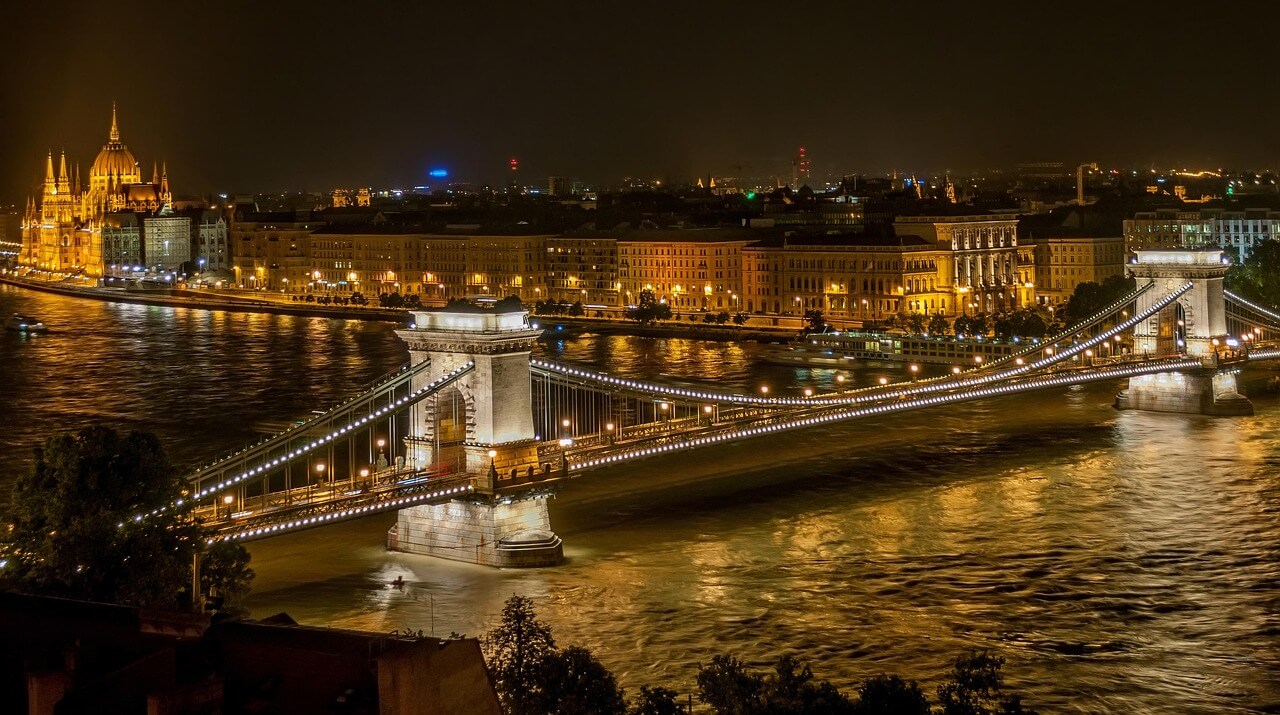When to visit Hungary during the year?
Hungary experiences a continental climate, with hot summers and cold winters, making it a year-round destination. Summer (June to August) is the peak tourist season, attracting visitors to the vibrant streets of Budapest, the stunning Lake Balaton, and world-renowned thermal baths. Autumn (September to November) offers colorful foliage and the famous Budapest Wine Festival. Winter (December to February) can be chilly, especially in the northern regions, but it's a magical time with Christmas markets and snow-covered landscapes. Spring (March to May) sees a revival of outdoor activities, including hiking in the Bükk Mountains and enjoying cultural festivals in the heart of the cities.
How to get to Hungary?
Reaching Hungary is accessible through various modes of transport, connecting to both major cities and tourist destinations. The capital, Budapest, is the primary hub that welcomes international travelers with a range of transport options.
- Budapest Ferenc Liszt International Airport is the main airport with connections to every continent, including major hubs like London Heathrow (Europe), New York JFK (North America), Dubai International (Asia), Johannesburg OR Tambo (Africa), and Sydney Kingsford Smith (Oceania).
- Low-cost airlines such as Wizz Air operate extensively across Europe.
- Flight times vary; a direct flight from London to Budapest takes about 2 hours, while from New York, it can be approximately 8 hours.
- Main bus stations include Népliget in Budapest, connecting cities such as Vienna, Prague, and Krakow.
- Bus routes are frequent and offer affordable options for intercity travel.
- The Hungarian railway system allows efficient international travel, with services connecting Budapest to Vienna (around 2.5 hours) and Bratislava (1 hour).
- Popular routes include ÖBB and MÁV which operate across Central Europe.
- Main highways include the M1 and M7 leading from Vienna and Zagreb, respectively.
- Distances are reasonable; Budapest from Vienna is approximately 243 km with an estimated travel time of about 2.5 hours.
- Tolls are applicable on highways, and road conditions are generally good.
Tourist activities in Hungary
Hungary is a treasure trove of activities that cater to diverse interests, from its rich cultural heritage to natural beauty. Here are the main themes:
- Historical and Cultural: Budapest, often called the "Pearl of the Danube," features the iconic Parliament building, Buda Castle, and the historic thermal baths like Gellért and Széchenyi. The city hosts numerous festivals celebrating music, arts, and film.
- Nature and Outdoors: The national parks, such as Hortobágy and Bükk, offer hiking trails and stunning landscapes. The Danube Bend provides scenic views and opportunities for kayaking.
- Wine and Gastronomy: Visit the wine-producing regions like Tokaj and Eger to sample exquisite wines and enjoy traditional Hungarian meals at local vineyards.
- Relaxation: Enjoy spa treatments in Budapest’s thermal baths or spend a day at Lake Balaton, a popular spot for swimming and water sports.
Accommodation in Hungary
Hungary offers a wide array of accommodation choices catering to various budgets and preferences. In Budapest, luxury hotels like the Four Seasons or Hilton provide opulence, while mid-range options such as boutique hotels give unique local experiences. For budget travelers, hostels and guesthouses are plentiful. Outside the capital, many rustic lodges and eco-friendly options in regions like Lake Balaton and the countryside are available. Average prices per night range significantly: budget hotels start around €20, while luxury stays can exceed €200. Visitors often find that booking ahead during peak seasons can secure better rates.
Food in Hungary
Hungarian cuisine is renowned for its rich flavors, spices, and hearty dishes. Signature foods like goulash, pörkölt (stew), and chimney cake are must-tries. Desserts such as kürtőskalács (chimney cake) offer a sweet finale after a savory meal. Traditional drinks include Pálinka (fruit brandy) and Tokaji wine, famous worldwide. Restaurants range from high-end dining in Budapest to affordable local eateries serving authentic dishes. Meals typically cost around €10-20 depending on the venue, making it budget-friendly for travelers.
Important numbers and information
- Emergency services: Police - 112, Ambulance - 104, Fire Brigade - 105
- Embassy contacts: Nearest embassy contacts depend on your nationality; Hungary also has a welcoming policy for tourists.
- Airports: Budapest Ferenc Liszt International Airport, 1185 Budapest, Hungary.
- Currency: Hungarian Forint (HUF), widely accepted credit cards.
- Visa/Passport: EU citizens can enter without a visa; others may need varying documents based on nationality.
What to see in Hungary?
Hungary boasts numerous attractions, combining historical richness, natural beauty, and vibrant culture:
- Budapest: The capital is a must-visit for its stunning architecture, including the stunning chain bridge, the Fisherman's Bastion, and the thermal baths.
- Lake Balaton: Known as the 'Hungarian Sea', this large lake offers water sports, beaches, and charming towns.
- Eger: Famous for its castle and red wine, Eger is a picturesque town with thermal baths and beautiful baroque architecture.
- Szentendre: A quaint artists' village near Budapest, ideal for strolling and exploring galleries.
- Hortobágy National Park: A UNESCO World Heritage site, perfect for hiking and enjoying Hungarian wildlife.
History, geography and climate
Hungary has a rich tapestry of history influenced by many cultures throughout the centuries, from the early Magyars to the Ottoman Empire and Austro-Hungarian Empire. Its geographical layout features a mix of plains, hills, and lakes, with the Danube River cutting through the heart of the country. The climate varies from hot summers to cold winters, with average temperatures ranging from 0°C in January to around 25°C in July, providing diverse seasonal experiences for travelers.
Population and culture
Hungary has a population of approximately 9.6 million people, predominantly speaking Hungarian, a unique language in the region. While Christianity is the main religion, Hungary celebrates a range of cultural traditions, including folk music, dance, and crafts. Major holidays such as Easter and Christmas are widely observed, alongside unique local festivals like Busójárás, celebrating the end of winter. The rich cultural scene includes world-class opera houses, museums, and art galleries that showcase Hungary’s vibrant artistic heritage.








